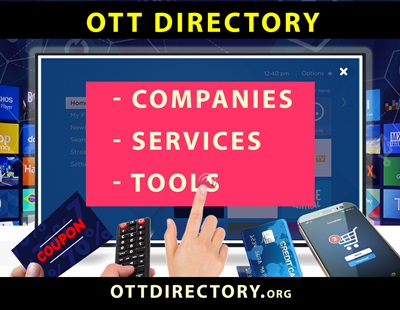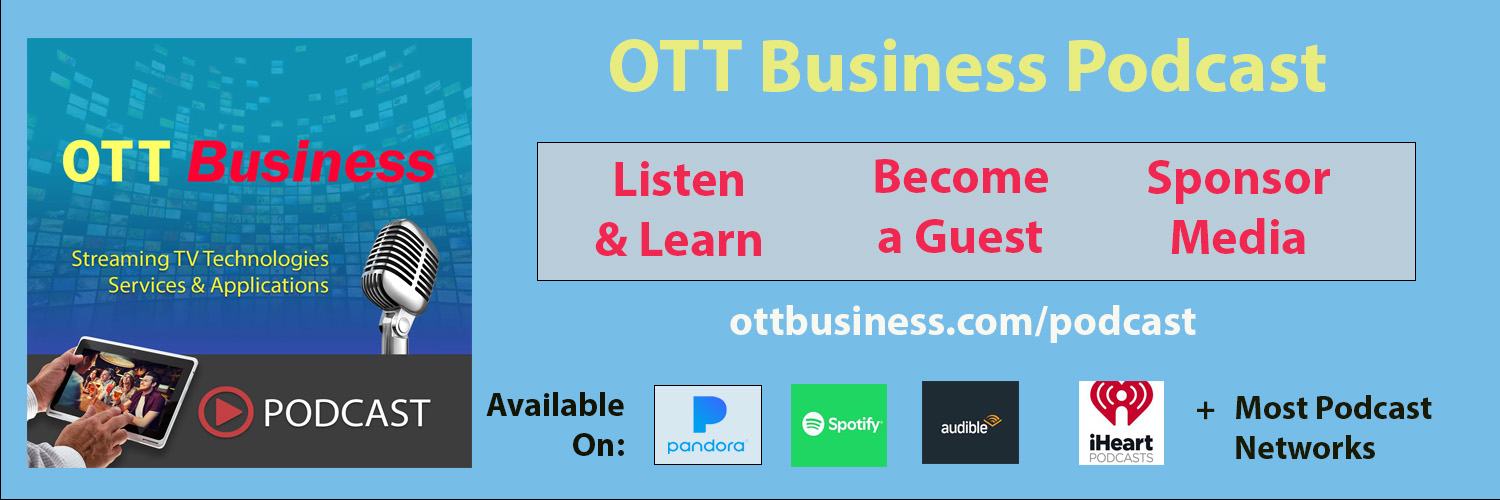Playout management systems enable the scheduling, automation, and real-time control of video content delivery, ensuring seamless streaming across various devices and platforms. Playout Management Systems address the complex challenge of efficiently scheduling, managing, and delivering video content in OTT environments, where consistency and real-time control are critical. These systems solve key issues such as automated content scheduling, seamless ad insertion, and multi-platform delivery, ensuring that content is played at the right time across all devices while maximizing revenue opportunities through dynamic ad management. Key features include robust analytics and reporting for data-driven decision-making, flexible content scheduling options, and real-time control, allowing for instant adjustments and uninterrupted service. Additionally, these systems offer scalability, third-party integration, and comprehensive security measures, making them adaptable to any size operation while safeguarding content and user data.
Playout Management Systems

Playout Management Systems List
24i – Provides flexible, modular, and highly scalable video streaming solutions for broadcasters, operators, and media companies.
Amagi – Amagi provides cloud-based broadcast and targeted advertising solutions for the OTT and Streaming TV industry.
Aveco – Aveco provides flexible and reliable playout solutions that integrate automation, media asset management, and multi-channel delivery for broadcasters and OTT providers.
Avid Technology – Avid Technology provides comprehensive media production solutions, including tools for video editing, asset management, and workflow automation.
Beeyou TV – provides an OTT and Streaming TV services easy to use platform that can manage, monetize, and deliver video content across multiple devices and platforms.
Bitcentral – Bitcentral provides broadcast and digital media workflow solutions, focusing on news production, media asset management, and multiplatform distribution.
Broadcast Pix – Broadcast Pix provides advanced playout automation systems with real-time control and integration for efficient content scheduling and delivery across OTT platforms.
BroadStream Solutions – BroadStream Solutions offers advanced playout automation and media management systems designed to simplify complex workflows and ensure seamless content delivery.
Cinegy – Cinegy is a world-leading software development company specializing in innovative video, broadcast, media asset management and OEM solutions for international broadcasters and equipment vendors.
Cobalt Digital – Cobalt Digital offers innovative playout management systems that focus on automation and real-time monitoring for efficient content delivery across multiple platforms.
Dalet – Dalet provides integrated solutions for media asset management, workflow orchestration, and multiplatform content distribution.
Eletec Broadcast – Eletec Broadcast offers reliable playout and automation solutions for radio and TV, ensuring high-quality content delivery and efficient operation across platforms.
ENCO Systems – ENCO Systems delivers comprehensive playout and automation solutions that enable efficient content scheduling, real-time control, and multi-platform distribution.
Etere – Etere provides innovative playout automation and media management solutions with real-time monitoring and advanced scheduling capabilities for the broadcast and OTT industries.
Evertz – Evertz offers a wide range of media and broadcast solutions, including advanced media asset management and workflow automation systems.
Grass Valley – Grass Valley offers comprehensive solutions for live production, media workflow, and content delivery, empowering media organizations to create and distribute high-quality content.
Harmonic – Harmonic VOS offers cloud-based media processing and transcoding solutions for live and on-demand streaming.
Imagine Communications – Imagine Communications provides broadcast and streaming TV systems and services specializing in media processing, content delivery automation and dynamic ad management.
Kroma Telecom – Kroma Telecom provides integrated playout and automation solutions that support real-time control and multi-platform content distribution for broadcasters and OTT services.
Oasys – Oasys offers next-generation playout automation and channel management solutions designed to simplify and streamline the delivery of high-quality video content.
Pebble Beach Systems – Pebble Beach Systems specializes in flexible and reliable playout automation solutions designed to handle complex scheduling and real-time control.
Pixel Power – Pixel Power specializes in broadcast playout and automation systems, combining scheduling, automation, and branding tools for seamless content delivery across platforms.
PlayBox Technology – PlayBox Technology offers a comprehensive playout automation system that provides scheduling, media management, and multi-platform delivery.
RCS Sound Software – RCS Sound Software offers advanced playout automation systems with integrated scheduling, media management, and real-time control features for radio and TV broadcasting.
Ross Video – Ross Video delivers comprehensive playout solutions that combine automation, media asset management, and multi-platform delivery for broadcasters and OTT providers.
Snell Advanced Media (SAM) – SAM offers playout management and IP video monitoring tools that help broadcasters manage and optimize video quality across various platforms.
Synamedia – Synamedia delivers end-to-end video solutions for OTT service providers, including security, monitoring, and analytics to ensure seamless content delivery.
TAG Video Systems – TAG Video Systems offers 100% software-based solutions for IP monitoring, probing, and visualization, delivering real-time insights for OTT and broadcast video.
Veset – Veset provides cloud-based solutions specializing in OTT and Streaming TV playout automation, media asset management, and live streaming systems.
VSN – VSN provides comprehensive media asset management solutions that streamline content workflows from production to distribution for OTT and streaming TV services.
Playout Management Systems Key Features and Capabilities
Ad Insertion and Management
The system should seamlessly integrate ad insertion capabilities, allowing for dynamic ad replacement and precise ad management within the content stream. This feature is crucial because it enables service providers to maximize revenue opportunities by delivering targeted ads without interrupting the viewer experience.
Analytics and Reporting
A robust Playout Management System should offer detailed analytics and reporting tools to track content performance, viewer engagement, and other critical metrics. These insights are important for making data-driven decisions, optimizing content strategies, and ensuring the success of your streaming service.
Automated Scheduling
The ability to automatically schedule content based on predefined rules reduces the need for manual intervention and ensures that content is played at the correct time. This feature is essential for maintaining a consistent broadcast schedule and minimizing the risk of human error in content delivery.
Content Ingest and Management
Efficient tools for ingesting, cataloging, and managing video content are vital, including capabilities for metadata tagging and media asset management. This functionality is important because it streamlines the content workflow, making it easier to organize and retrieve assets, ultimately saving time and resources.
Content Scheduling Flexibility
A flexible scheduling system allows for various programming options, including looped playback, time-based triggers, and live content integration. This flexibility is crucial because it enables providers to adapt their content delivery to different audience needs and scenarios, enhancing viewer satisfaction.
Customization Options
The system should offer customization options to meet specific operational needs, such as branding, user roles, and workflow automation. Customization is important because it allows the Playout Management System to align with the unique requirements and branding of each service provider, enhancing overall efficiency and user experience.
Media Formats
The ability to handle a wide range of video formats and codecs ensures compatibility with various content sources. This feature is vital because it allows the system to work seamlessly with diverse media inputs, reducing the need for additional format conversions and ensuring smooth playback.
Multi-Platform Delivery
A good Playout Management System should support content delivery across multiple platforms, such as web, mobile, and smart TVs, simultaneously. This capability is important because it ensures that viewers have a consistent and high-quality experience across all devices, increasing audience reach and engagement.
Real-Time Control
The system should provide real-time monitoring and control over content playout, enabling operators to make instant changes to schedules or content as needed. Real-time control is essential because it allows for quick responses to unexpected events, maintaining the integrity and reliability of the broadcast.
Reliability and Redundancy
Built-in failover and redundancy features are necessary to ensure continuous operation and minimize the risk of downtime. This feature is critical because it safeguards against potential system failures, ensuring that content delivery remains uninterrupted even in the face of technical issues.
Scalability
The system should be scalable to handle varying levels of content demand, from small local operations to large global networks. Scalability is important because it allows the Playout Management System to grow with your business, accommodating increasing audience sizes and content volumes without compromising performance.
Security Features
Robust security measures, including encryption, access controls, and secure data storage, are essential for protecting content and user data. Security is a top priority because it ensures that sensitive information remains safe from unauthorized access, helping to maintain the trust of content creators and viewers alike.
Third-Party Integration
Compatibility with other systems, such as content management systems (CMS), ad servers, and digital rights management (DRM) platforms, is crucial for a seamless workflow. Third-party integration is important because it allows for smoother operations, reducing the complexity of managing multiple tools and enhancing overall system efficiency.
Playout Management Glossary
Application Programming Interface (API) – A set of tools and protocols that allow different software systems to communicate and interact with each other, enabling integration and automation in playout management systems.
Automated Content Recognition (ACR) – Technology that identifies and catalogs media content automatically, enabling real-time monitoring and management within playout systems.
Broadcast Automation System (BAS) – A system that automates the scheduling and playout of broadcast content, ensuring seamless delivery and reducing the need for manual intervention.
Content Delivery Network (CDN) – A network of servers that deliver video content to users based on their geographic location, ensuring efficient and reliable streaming performance.
Digital Asset Management (DAM) – A system that stores, organizes, and manages digital media files, making them easily accessible for playout and distribution.
Dynamic Ad Insertion (DAI) – A technology that enables the real-time insertion of advertisements into video streams during playout, allowing for targeted and personalized ad experiences.
Electronic Program Guide (EPG) – A menu-based system that provides users with a schedule of television programs, enabling them to navigate and select content for viewing.
High Availability (HA) – A system design approach that ensures continuous operation and minimal downtime for playout management systems, even in the event of hardware or software failures.
Internet Protocol (IP) – The set of rules that govern the transmission of data over the internet, commonly used in playout systems for the delivery of video content.
Media Asset Management (MAM) – A system that organizes, stores, and retrieves media files, facilitating efficient content playout and distribution.
Network Time Protocol (NTP) – A protocol used to synchronize the clocks of computers over a network, ensuring accurate timing and synchronization in playout systems.
Over-The-Top (OTT) – A term used to describe the delivery of video content over the internet, bypassing traditional broadcast methods, and directly reaching viewers via streaming platforms.
Playout Automation – The use of software to automate the scheduling, management, and delivery of video content, reducing manual tasks and ensuring seamless broadcasting.
Real-Time Streaming Protocol (RTSP) – A network control protocol designed for use in entertainment and communication systems to control streaming media servers.
Remote Device Management (RDM) – Technology that allows for the remote monitoring and control of devices used in playout systems, ensuring efficient operation and troubleshooting.
Scalability – The capability of a playout management system to handle increasing amounts of work or to be expanded to accommodate growth in content delivery needs.
Video On Demand (VOD) – A system that allows users to select and watch video content whenever they choose, rather than at a scheduled broadcast time.
Video Quality Control (VQC) – The process of monitoring and maintaining the quality of video content during the playout to ensure a high-quality viewing experience for end users.
Workflow Automation – The use of technology to automate the sequence of tasks involved in video content scheduling, playout, and distribution, improving efficiency and accuracy.
Zero Downtime – A term used to describe the goal of continuous system operation without any interruptions, critical for playout management systems to ensure seamless content delivery.

